The Synology BeeStation Plus doesn’t look like much at first glance. It’s just a simple black box with a subtle logo and it has enough physical ports to handle basic duties. But don’t let the modest shell fool you. Just like the Millennium Falcon, it’s got it where it counts.
What Synology has done here is take its deep experience in NAS systems and repackage it for an entirely different audience: the everyday user who wants a private cloud that just works, no tinkering required.
After spending a few months with the BeeStation Plus, I feel like it sits in a rare space. It manages to pull off that elusive balance of plug-and-play simplicity and meaningful performance. This isn’t a prosumer NAS but it’s also not trying to be. It’s something more approachable and positioned at an “every man” type of user. It’s a dead-simple, media-friendly file vault that doesn’t require a degree in networking.
The Setup: From Box to Cloud in Minutes
Unboxing the BeeStation Plus feels more like setting up a streaming box than configuring a server. You basically just plug in power, connect an Ethernet cable, and follow a few guided steps on your phone (or laptop). Synology walks you through account setup and firmware updates and there’s little room for error.
The whole thing takes about ten minutes, tops. Once you’re in, it’s all done through a slick, purpose-built OS called BeeStation desktop client.
The BeeStation Plus makes private cloud storage feel effortless, offering Plex-ready performance, photo backup smarts, and a setup so simple it feels more like plugging in a streaming stick than configuring a NAS.
It’s worth noting here that this is not Synology’s traditional DSM interface, but that’s by design. It is focused and pared-down, keeping all the messy stuff and fine-tuned detail and configuration stuff from sneaking out. It puts your files and photos front and center, hiding everything else unless or until you go looking.
You won’t find a deep web of settings with this thing. Instead, it’s intentionally limited as it prioritizes ease of use over customization. This is great for most users, especially those migrating from Google Photos or iCloud. Conversely, power users may find it a bit too locked-down. To me, though, the simplicity is what makes it shine. It’s hard to mess up, and nearly impossible to get lost in. If you’ve ever set up a NAS or backup system on your network, you know what I’m talking about.
Hardware: Modest on the Outside, Meaningful on the Inside
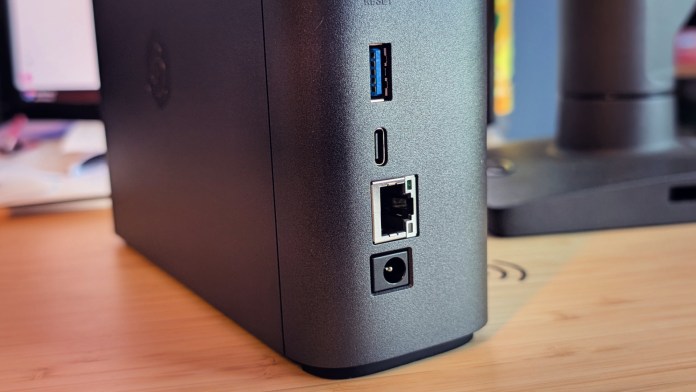
Compared to the original BeeStation, the Plus model introduces several key upgrades that dramatically improve day-to-day usability. The most noticeable change that some might recognize on paper is the jump in internal hardware. It goes from an ARM-based processor to an Intel Celeron J4125, which brings not only better performance but also unlocks support for more advanced applications… like Plex.
RAM is quadrupled, from 1GB to 4GB, helping the system juggle multiple tasks with ease. Storage doubles from 4TB to 8TB and moves from a 5400 RPM drive to a faster 7200 RPM model, resulting in snappier performance during large file transfers and photo indexing.
The addition of an active cooling fan may seem like a minor tweak, but it signals a shift in the BeeStation’s intended workload. This is no longer a basic backup box for homes. Now it’s designed to do more, and to do it more reliably.
If there’s one notable downside, it’s the single 1GbE LAN port. That bottleneck caps real-world transfer speeds to around 110MB/s, even though the drive itself is capable of more. A 2.5GbE port would have been nice for faster backups or large file transfers, but it’s a compromise Synology likely made to preserve simplicity and to come in at around $400. For the BeeStation’s intended audience, it’s a limit that most won’t bump into. In thinking about who might be the target user in my circle, I cannot imagine any of them all that worried about the transfer speeds.
A Private Media Hub That Actually Delivers
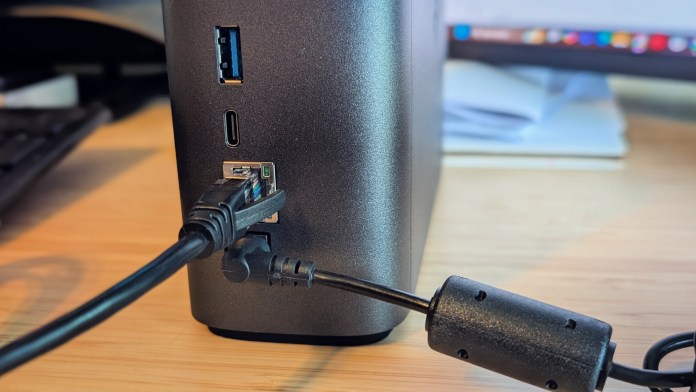
The real magic of the BeeStation Plus is its Plex integration. This is one of the few consumer-friendly NAS devices that can truly handle 4K video streaming and even on-the-fly transcoding without choking. For anyone who’s ever wanted to host their own media server but gets overwhelmed by RAID configs, network share permissions, or just technical jargon, this could what you’re after.
Installing Plex is easy, and once it’s up, it works just like you’d expect. Stream content from your phone, tablet, smart TV with no problem as it handles direct playback and transcoding. Hardware transcoding is the standout feature here, and it performs well for single-stream use. Even when streaming high-bitrate 4K files, it didn’t even seem to break a sweat or feel like I was pushing too hard.
If you’re aiming to share access with a household, the included 4GB RAM helps ensure everything stays smooth. Just keep in mind that full access to Plex’s premium features (like remote streaming or mobile sync) requires a Plex Pass subscription. Still, for local streaming, the experience is polished and fast.
BeePhotos: Surprisingly Capable, Pleasantly Private

BeePhotos is more or less Synology’s answer to Google Photos, but with one key difference: everything stays local. It uses onboard AI to sort, group, and tag images by face and object, and it does it without sending anything to the cloud.
In day-to-day use, the BeePhotos app feels snappy and polished. Automatic backups from my phone have been reliable, and the map and timeline views can be helpful, if not fun, for reliving vacations. The facial recognition might need some hand-holding, especially if you’re migrating a huge library, but it’s impressive how much of this works out of the box with minimal effort.
Importing a photo library from a USB drive or even Google Photos is supported, though large libraries (think 50,000+ images) will take a while to process. What’s the benefit of doing this? Everything lives under your roof, not someone else’s. In an era where privacy is a growing concern, BeePhotos comes across as a breath of fresh air.
What You Gain (and Give Up)
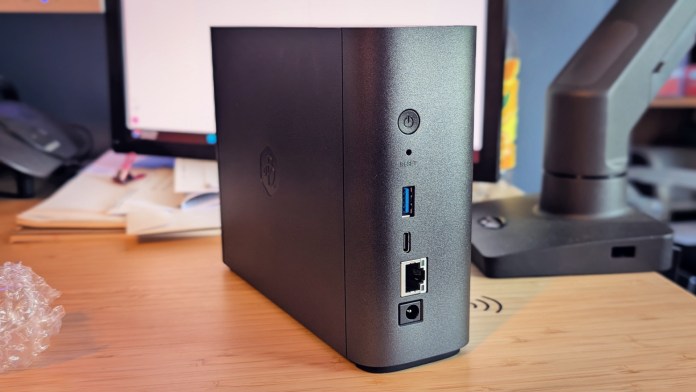
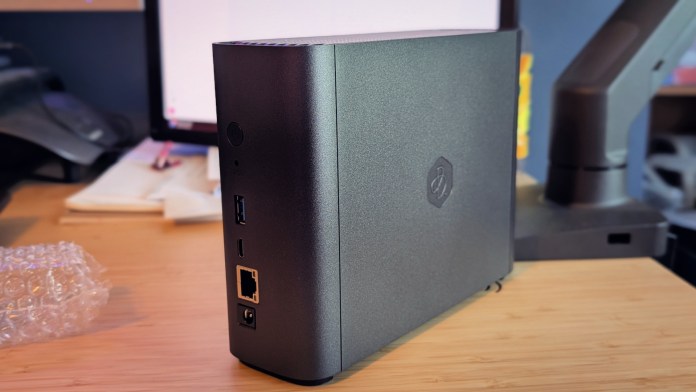
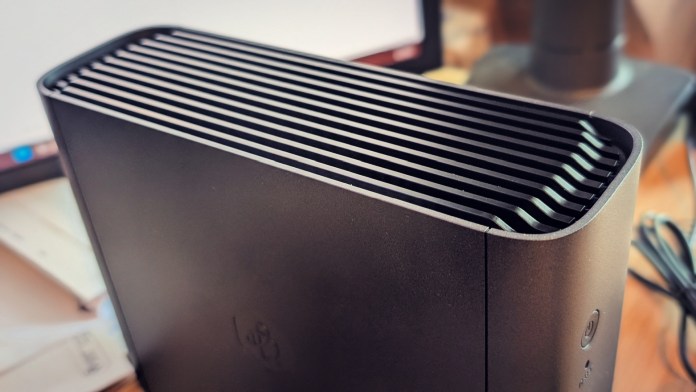
For better or worse, the experience tomorrow is likely what it is today. That is to say, there are some limitations or things to keep in mind. The BeeStation Plus isn’t expandable. The drive is sealed. You can’t add RAM. There’s no RAID or multi-bay setup. And if the drive dies, your only hope is a backup.
That sounds like big trade-offs, right? Maybe. For those used to traditional NAS systems with redundancy and upgrade paths, this stuff might be a deal-breaker. For those dipping their toes into the pool of backup options, it probably amounts to a bunch of non-issues.
To mitigate some of the risks, Synology includes snapshot-based backups and the ability to mirror to a USB drive. Moreover, its BeeProtect (optional cloud backup) is available, too, at $120/year. It’s not cheap, but it gives you peace of mind that the BeeStation otherwise lacks. Plus, it’s still expensive than paying for a 2TB Google One plan.
You’ll get three months of BeeProtect with the purchase of the BeeStation Plus which is plenty of time to get hooked on it and see the long-term value.
For those doing the math: the upfront $409 cost covers hardware and setup. Add three years of BeeProtect, and you’re closer to $770 total. That’s still competitive with other cloud storage tiers, especially since you own the hardware outright and aren’t beholden to policy changes.
The Verdict: A Smart Starter Server for the Cloud-Weary

This product has earned the Pinnacle Selection award, reserved for those with an average rating of 4.25 stars or higher. Recognized as best in its class, it excels in innovation, design, and user satisfaction. Our review confirms its outstanding quality and performance, setting a high standard in its category.
The Synology BeeStation Plus feels exactly like what it bills itself as: a private, plug-and-play cloud for families, freelancers, and media lovers who don’t want the complexity of a full-blown NAS. It trades expandability and redundancy for ease and reliability, and that’s the right move for many.
Should your main goal be to keep photos, files, and media in your own hands, this is one of the most approachable ways to do it. Just know what you’re signing up for, and plan your backups accordingly.
It won’t replace a prosumer NAS, but it’s not meant to, either. For first-time buyers, or anyone tired of subscription fatigue, the BeeStation Plus strikes an admirable balance. For those users, this isn’t just a decent solution, but maybe the one they’ve been after for too long.